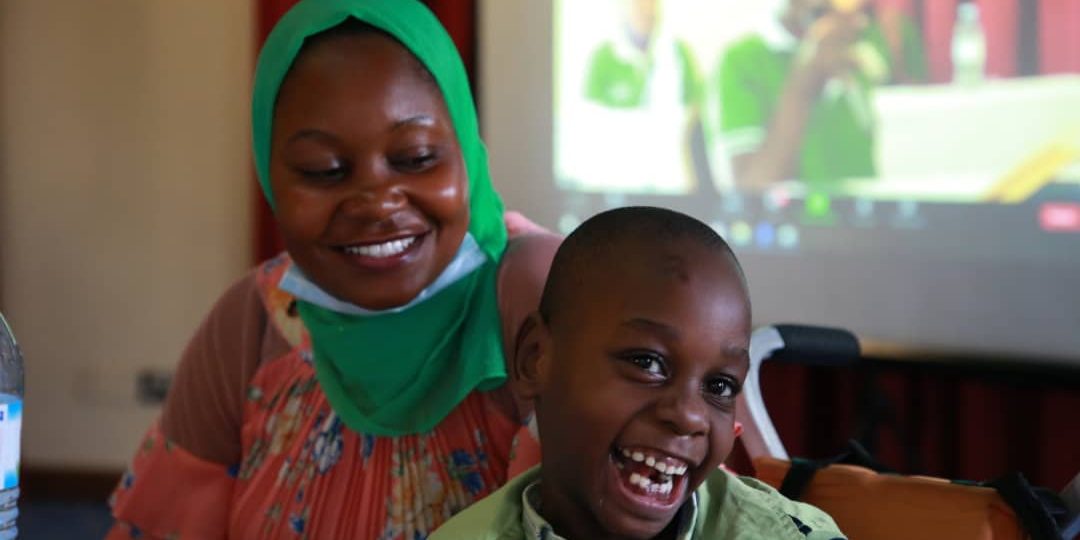By Esther Nakkazi
He says they are among the most marginalized persons with disabilities in Uganda since Cerebral palsy is largely not recognized by mainstream National Development programs.
Preterm birth, sickle cell anemia, obstetric complications, birth asphyxia, neonatal jaundice are high-risk factors. Some children get cerebral palsy after birth caused by episodes of cerebral infections, high fevers, convulsions, brain infections such as bacterial meningitis.
“Cerebral palsy has no cure. It requires patience and consistency,” advises Asiimwe.
After the diagnosis, it was full time looking after Rahmah. Latifah lost a job. Her husband ran away. “He said he cannot be the father of such a child,” says Latifah with all the sadness in her eyes.
Change of mindset:
After losing her job as a secretary at the Ministry of defense, her husband abandoned them, Latifah turned to her talent and what she loves to do best – decoration. She now decorates for weddings, parties, and even conferences. She learned to ignore the abuses, live with the stigma, and focus her energy on creating awareness about cerebral palsy in communities. She also started appreciating all the milestones Rahmah achieved and now calls her a miracle child renamed ‘Mukiisa’.
She learned new local innovations. One such tip that she says has improved Rahmah’s life is the soil technique. In Uganda, some parents dig a hole in the ground put the child with cerebral palsy in a standing position in it, and cover the child with clean sand or soil. The soil is up to the neck. It can be for minutes or hours – for as long as the child can endure.
It is the equivalent of a standing frame that costs about $100 or UGX 360,000. Since a child will need a new standing frame at every stage, parents of children with cerebral palsy said they are costly and unaffordable. Moreover, children also require essential drugs for life. “At first she stood in the hole for about 30 minutes but she cried a lot even when I was sited by her side and assuring her,” says Latifah. Gradually, the duration was increased to 45 minutes and now she stands in it for an hour.
Rahmah is not bothered by standing in the sandpit anymore. While in it her twin brothers keep her company and the watchful eyes of her mother are always close. “Rahmah was floppy but now the backbone is firmer, she is more stable. It has helped her backbone and joints,” says Latifah. On top of that, she attends physiotherapy.
Stephen Muhumuza attests to benefiting from this local innovation. “My mother died when I was only a day old. I lived with my grandmother a natural therapist. I could not walk until I was 10 years old. My grandmother put me in the soil pit and it helped,” says Muhumuza how 45 years old and with a family.
Kalule who also says his condition improved due to the pit and soil innovation explains the three models of disability in Uganda as thus. “In Uganda, we have three models of disability; the belief that disability is a charity and you have to depend on begging to go survive that is why most parents do not take their children to school. The second model is medical where they take you to the hospital or rehabilitation and forget about you,” says Kalule.
He urges all Ugandans to embrace the third model. “With the social model, we can break the barriers and work together.” “
“I may be with a disability today but if we work together we can break the barriers,” says Kalule.
Appeal from UNAC: As we celebrate World Cerebral palsy day 2020, it’s important to note that persons with cerebral palsy raise critical concerns for redress:
- We appeal to the stakeholders in the mainstream government programs and development partners.
- To popularize awareness of Cerebral palsy and provide attention to additional reasonable accommodation needs of persons with cerebral palsy to enable inclusive and equal participation in the mainstream development programs.
- Rebalance the combination of COVID-19 interventions to minimize the impact of standard physical distance and lockdown strategies on persons with severe disabilities in communities (like CP).
- Extend social protection programs, inclusive education, and health services to reach persons with cerebral palsy at Zero cost.
- Make public services accessible to make society a better place for all.
- The Community stakeholders to collaborate with UNAC in protecting the rights of persons with Cerebral palsy particularly children who are at increased risk of abuse, neglect, and murder. (UNAC statement)




